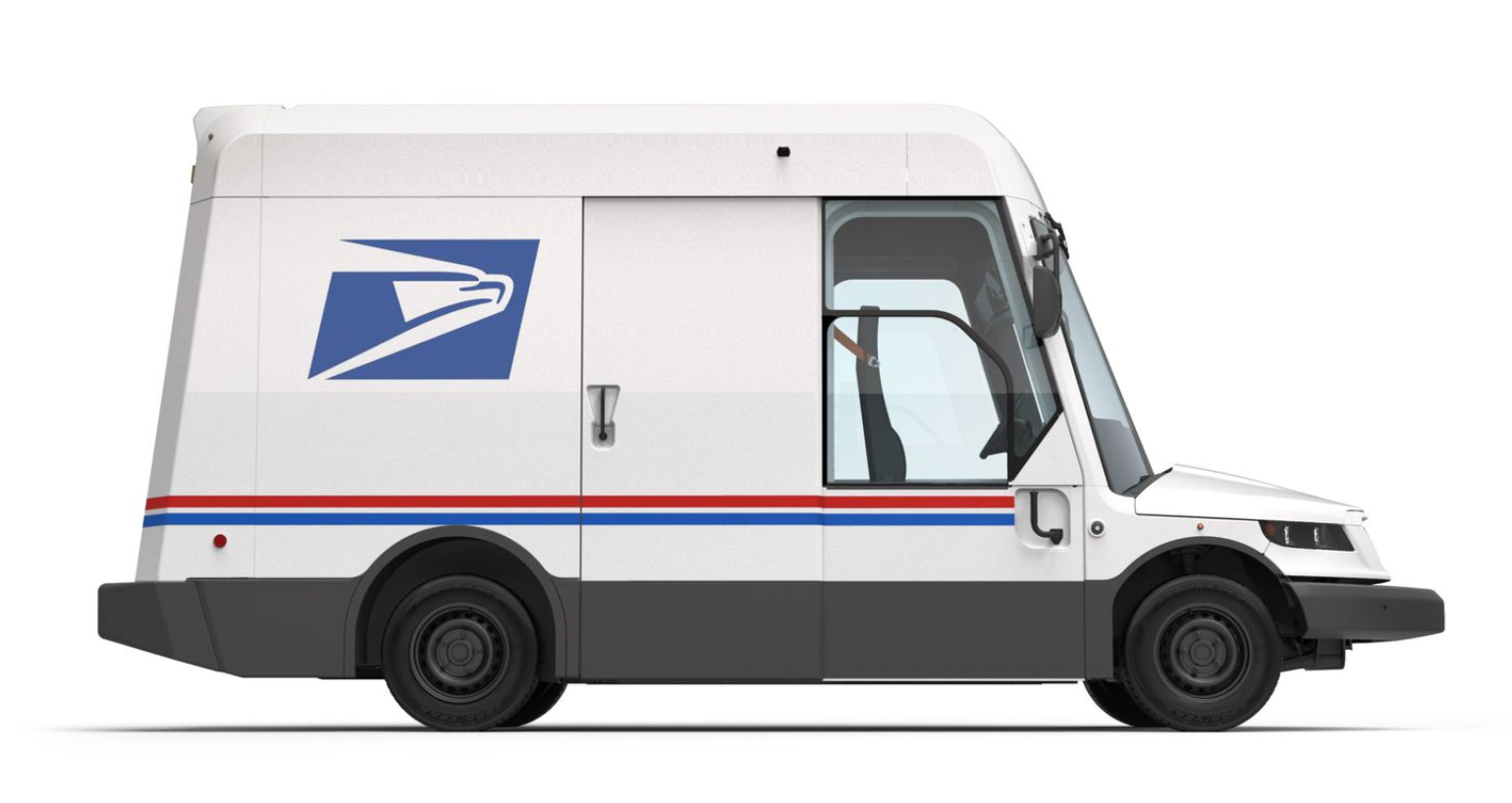Electrifying the US Postal Service fleet would be one of the most effective ways for the federal government to encourage EV adoption (while saving taxpayers billions of dollars and eliminating tons of emissions). However, there is a strong faction at the agency that seems determined to prevent that from happening, and some see the draft environmental impact statement (EIS) that the agency released last week as the latest salvo from the “save the gas vehicles” contingent.
In February, the USPS decided to award a $6-billion contract to Oshkosh Defense to build a new delivery vehicle to replace the agency’s sadly outdated fleet. Under the current proposal, only 10% of these will be electric, and the new EIS seems designed to support this plan.
The Zero Emission Transportation Association (ZETA) says the EIS “demonstrates a clear, illogical commitment to ICE vehicles over battery-electric vehicles, which hinges on outdated and incorrect information.”
The EIS looks at only two alternative scenarios for the new fleet: 90% ICE vehicles and 10% EVs; or 100% EVs. The USPS does not consider the 75% EV fleet composition proposed in the Postal Vehicle Modernization Act (HR1636), sponsored by US Representative Jared Huffman.
The EIS report acknowledges that a 100% EV fleet would produce 200% less emissions than the 90% ICE/10% EV option, but calls electrification financially infeasible considering the current financial status of the USPS. According to ZETA, this analysis is inaccurate for several reasons: “The cost calculation inexplicably uses nickel manganese batteries, which are more expensive—and less common and efficient—than EV industry-standard lithium-ion batteries. Furthermore, the USPS’s conclusions about BEVs’ financial impact did not consider its own analysis about the social cost of carbon: The USPS calculated that the 100% BEV scenario could save three times as much in social costs compared to the 90% ICE and 10% BEV scenario. The EIS also cites the cost of charging infrastructure as a barrier to the 100% BEV scenario, but it does not list the assumptions or calculations used to make that conclusion.”
A recent report from the Electrification Coalition and Atlas Public Policy found that “USPS offers a uniquely strong case for vehicle electrification.” According to the study, “Federal Fleet Electrification Assessment,” by 2025, EVs will be less expensive than conventional vehicles for more than 99 percent of the USPS light-duty fleet, and electrification could save taxpayers some $2.9 billion. By 2030, that figure increases to nearly 100 percent, and the switch could save $4.6 billion.
The USPS also concluded that EVs are incapable of handling the distance, weather conditions, or charging requirements on up to 12,500 of the agency’s 232,000 routes. As ZETA point out, the supposedly EV-unfriendly routes represent less than 5.4% of the USPS’s total routes. Furthermore, the USPS does not plan to replace 100% of its existing fleet—rather, it is replacing 22.9% to 75.6% of its fleet over the next ten years.
“Its remaining vehicles could easily cover these routes, or the USPS could purchase a small percentage of new, fuel-efficient ICE vehicles to cover these routes,” writes ZETA. “The USPS inexplicably argues that because 5.4% of its routes are not a good fit for electrification, it is justified in acquiring a 90% gas-powered new fleet.”
“The USPS cherry-picked their models and data in order to weave the narrative they needed to justify their decision to pursue [a mostly ICE fleet],” ZETA concludes. “The USPS’s EIS shows a clear bias against BEVs by excluding data, relying on unrealistic assumptions, and mistaking simple facts.”
ZETA plans to participate in the formal public comment period of the draft EIS.
Source: Zero Emission Transportation Association

oral lasuna – purchase lasuna pills himcolin drug
buy neurontin 600mg generic – purchase gabapentin online buy sulfasalazine pill
benemid pills – buy tegretol 400mg for sale where to buy carbamazepine without a prescription
celecoxib cheap – urispas over the counter buy indomethacin for sale
buy mebeverine 135 mg for sale – arcoxia 60mg cheap cilostazol 100 mg us
buy voltaren 100mg generic – aspirin sale buy aspirin 75mg without prescription
mestinon price – purchase pyridostigmine generic oral azathioprine 25mg
ozobax price – order baclofen 10mg sale cheap piroxicam
diclofenac oral – buy generic nimodipine for sale cheap nimodipine for sale
buy cefdinir sale – clindamycin usa buy cleocin cheap
trihexyphenidyl price – artane pill buy diclofenac gel cheap
cheap prednisone 40mg – buy prednisolone 10mg order elimite online
order permethrin generic – benzoyl peroxide for sale online order generic retin cream
order betnovate 20 gm for sale – buy generic betnovate for sale benoquin cheap
metronidazole 400mg over the counter – cenforce 50mg oral order cenforce pills
order amoxiclav for sale – augmentin over the counter synthroid pills
losartan 25mg over the counter – cephalexin 250mg uk cephalexin 125mg usa
cheap cleocin 300mg – cleocin 150mg generic order indomethacin 50mg capsule
provigil 200mg oral – meloset for sale buy generic meloset 3mg
order eurax generic – order bactroban ointment cream order aczone pills
order zyban 150 mg without prescription – order ayurslim for sale buy cheap shuddha guggulu
buy capecitabine 500mg pills – buy ponstel online danazol without prescription
order prometrium pill – cost prometrium order generic clomiphene
purchase norethindrone online – cheap yasmin buy yasmin generic
гѓ—гѓ¬гѓ‰гѓ‹гѓі еЂ¤ж®µ – г‚ўгѓўг‚г‚·гѓ« – 250mg г‚ёг‚№гѓгѓћгѓѓг‚Ї гЃ®иіје…Ґ
гѓ—гѓ¬гѓ‰гѓ‹гѓі йЈІгЃїж–№ – гѓ—гѓ¬гѓ‰гѓ‹гѓі жµ·е¤–йЂљиІ© イソトレチノイン通販